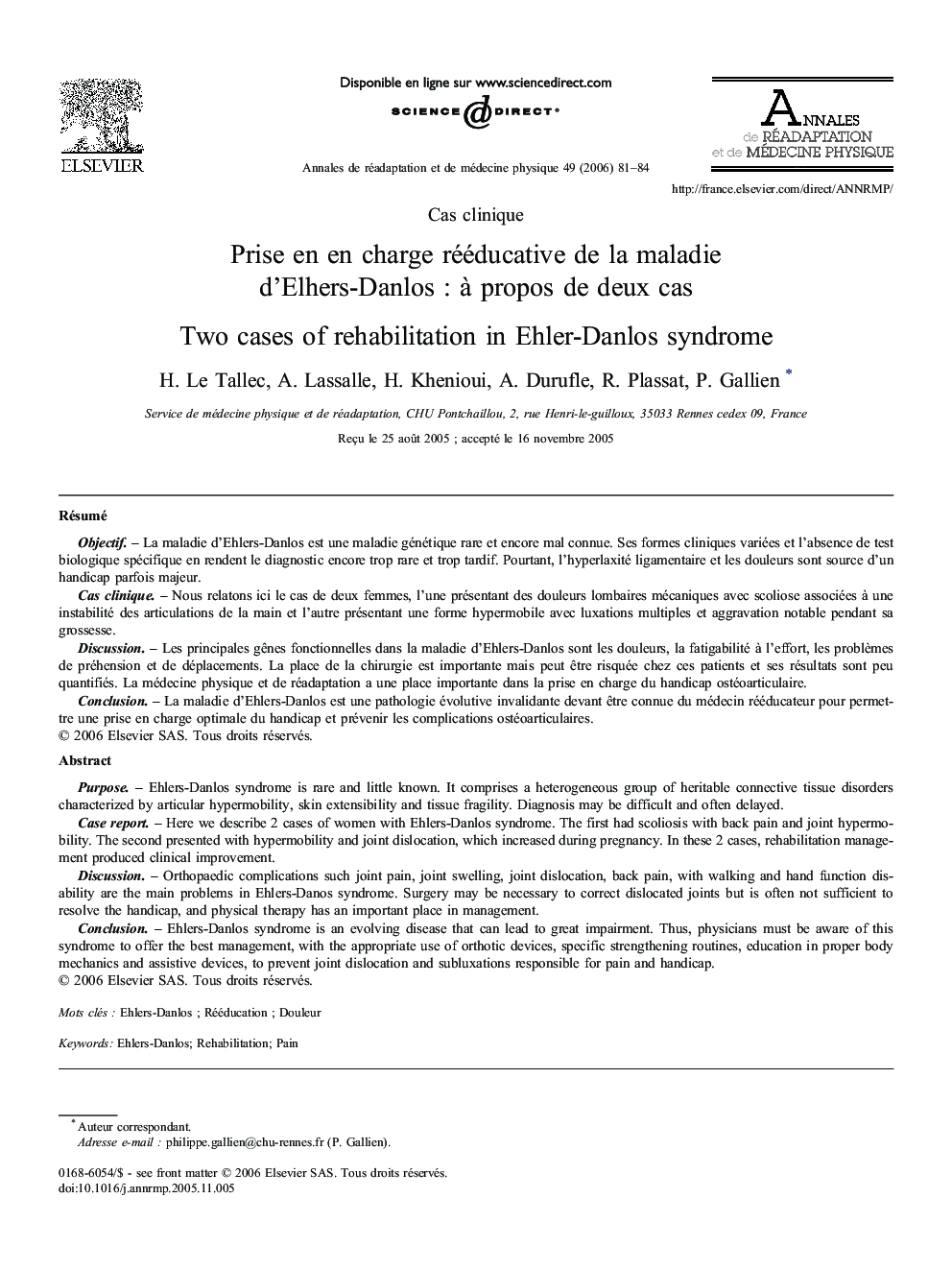| Article ID | Journal | Published Year | Pages | File Type |
|---|---|---|---|---|
| 4040431 | Annales de Réadaptation et de Médecine Physique | 2006 | 4 Pages |
RésuméObjectif. – La maladie d'Ehlers-Danlos est une maladie génétique rare et encore mal connue. Ses formes cliniques variées et l'absence de test biologique spécifique en rendent le diagnostic encore trop rare et trop tardif. Pourtant, l'hyperlaxité ligamentaire et les douleurs sont source d'un handicap parfois majeur.Cas clinique. – Nous relatons ici le cas de deux femmes, l'une présentant des douleurs lombaires mécaniques avec scoliose associées à une instabilité des articulations de la main et l'autre présentant une forme hypermobile avec luxations multiples et aggravation notable pendant sa grossesse.Discussion. – Les principales gênes fonctionnelles dans la maladie d'Ehlers-Danlos sont les douleurs, la fatigabilité à l'effort, les problèmes de préhension et de déplacements. La place de la chirurgie est importante mais peut être risquée chez ces patients et ses résultats sont peu quantifiés. La médecine physique et de réadaptation a une place importante dans la prise en charge du handicap ostéoarticulaire.Conclusion. – La maladie d'Ehlers-Danlos est une pathologie évolutive invalidante devant être connue du médecin rééducateur pour permettre une prise en charge optimale du handicap et prévenir les complications ostéoarticulaires.
Purpose. – Ehlers-Danlos syndrome is rare and little known. It comprises a heterogeneous group of heritable connective tissue disorders characterized by articular hypermobility, skin extensibility and tissue fragility. Diagnosis may be difficult and often delayed.Case report. – Here we describe 2 cases of women with Ehlers-Danlos syndrome. The first had scoliosis with back pain and joint hypermobility. The second presented with hypermobility and joint dislocation, which increased during pregnancy. In these 2 cases, rehabilitation management produced clinical improvement.Discussion. – Orthopaedic complications such joint pain, joint swelling, joint dislocation, back pain, with walking and hand function disability are the main problems in Ehlers-Danos syndrome. Surgery may be necessary to correct dislocated joints but is often not sufficient to resolve the handicap, and physical therapy has an important place in management.Conclusion. – Ehlers-Danlos syndrome is an evolving disease that can lead to great impairment. Thus, physicians must be aware of this syndrome to offer the best management, with the appropriate use of orthotic devices, specific strengthening routines, education in proper body mechanics and assistive devices, to prevent joint dislocation and subluxations responsible for pain and handicap.
